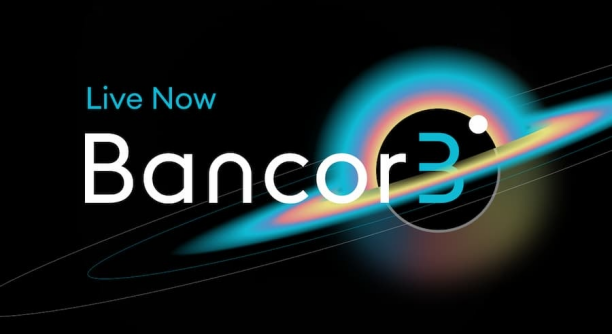
Bancor is a decentralized exchange protocol designed to facilitate token swaps and staking. This project is based on the Ethereum and EOS blockchains and uses an automated market maker (AMM) system to facilitate token trading in token liquidity pools without matching buyers and sellers. This article will delve into the role of the BNT token in the Bancor protocol and its future development.
How the Bancor Protocol works
Bancor consists of a series of smart contracts that support on-chain conversion of virtual coins. The protocol makes swapping digital assets simple and fast without using traditional exchanges. These smart contracts manage a series of liquidity pools for various cryptocurrency assets.
Bancor's name was inspired by British economist and financier John Maynard Keynes. As early as the 1940s, he had the idea for the "Bancor," a unit of account that could be used to track the flow of assets and liabilities.
Bancor's goals
Bancor’s goal is to generate liquidity for altcoins and reward liquidity providers. The protocol is capable of converting various virtual assets into other currencies, including those running on other blockchains, without interference from third parties. Bancor aims to support all tokens compatible with the ERC-20 standard. Any smart token built on the Bancor network is also ERC-20 compatible, making it compatible with other coins on the network.
Bancor aims to incentivize customers to hold tokens and convert them into other assets at automatically calculated prices using a simple online wallet.
The history of the Bancor protocol
June 12, 2017: Bancor launches what was then the largest initial coin offering (ICO). It raised $153 million, allocating half of the initial BNT supply in the process. The other half is distributed to Bancor’s founders, investors and the treasury. Bancor is the first decentralized exchange (DEX) to use AMM to facilitate exchanges between Ethereum-based tokens. Rather than a central order book that matches buyers and sellers based on bids and asks, AMMs fulfill orders through an on-chain liquidity pool.
July 2018: The project faces illegal activity. Hackers stole 25,000 ETH, 2.5 million BNT, and 230 million NPXS tokens from the Bancor protocol. The team successfully recovered, frozen or destroyed the stolen BNT, but did not recover ETH and NPXS.
The resurgence of the Bancor team has sparked controversy around the protocol’s centralized governance, as this allows the team to unilaterally manipulate the BNT supply. The incident prompted the team to decentralize its platform by transitioning governance to a decentralized autonomous organization (DAO). Bancor DAO will be launched at the end of 2020. It allows BNT investors to propose and vote on updates and protocol governance issues.
September 2019: Bancor announced that it would airdrop its entire Ethereum reserves to BNT users. The team also changed the tokenization model to allow for inflation and reward community-suggested liquidity pools, oracles, and developers.
March 2021: Bancor version 2.1 launches new BNT supply and governance updates to address issues common to AMM-based exchanges. Previous iterations of Bancor required liquidity providers (LPs) to deposit two assets, BNT and its paired token, into each pool on a proportional basis. This often leads to involuntary exposure in any cryptocurrency. When asset prices on Bancor lag behind prices elsewhere, liquidity will allow providers to experience temporary losses. New BNT supply is elastic and can alleviate these problems. Single-sided deposits are now accepted and paired with newly minted BNT, eliminating involuntary risk. When LPs deposit BNT into the same minting pool, BNT is burned to balance the circulating supply of BNT. Bancor now requires a minimum BNT staking period to receive vBNT, the protocol’s new governance token. Bancor Vortex provides BNT depositors with additional rewards for subsequently staking their vBNT.
The future of BNT tokens
The BNT token plays a vital role in the Bancor protocol. It is not only a core asset in the liquidity pool, but also a key tool for governance. With the launch of Bancor DAO, BNT holders have more opportunities to participate and vote on the future direction of the protocol. This decentralized governance model helps ensure the long-term stability and development of the Bancor protocol.
In addition, the Bancor team continues to introduce new features and improvements, such as Bancor version 2.1, which are designed to solve the problems faced by liquidity providers and attract more users to participate in the Bancor ecosystem. As the cryptocurrency market continues to evolve, the demand and value of the BNT token is expected to continue to grow.
In short, the BNT token, as the core asset of the Bancor protocol, has broad application prospects and potential. As the Bancor protocol continues to develop and improve, the value and influence of the BNT token will further increase. For investors looking to pursue opportunities in the decentralized finance space, the BNT token is certainly an option worth paying attention to.
Conclusion
The Bancor protocol and the BNT token play an important role in the decentralized finance space. Through the automated market maker system and the governance model of a decentralized autonomous organization, Bancor provides users with an efficient and secure token trading platform. As technology continues to advance and the market develops, the future prospects of BNT tokens will be brighter. For those investors who wish to participate in the decentralized finance revolution, the BNT token is undoubtedly an object worthy of in-depth study and investment.